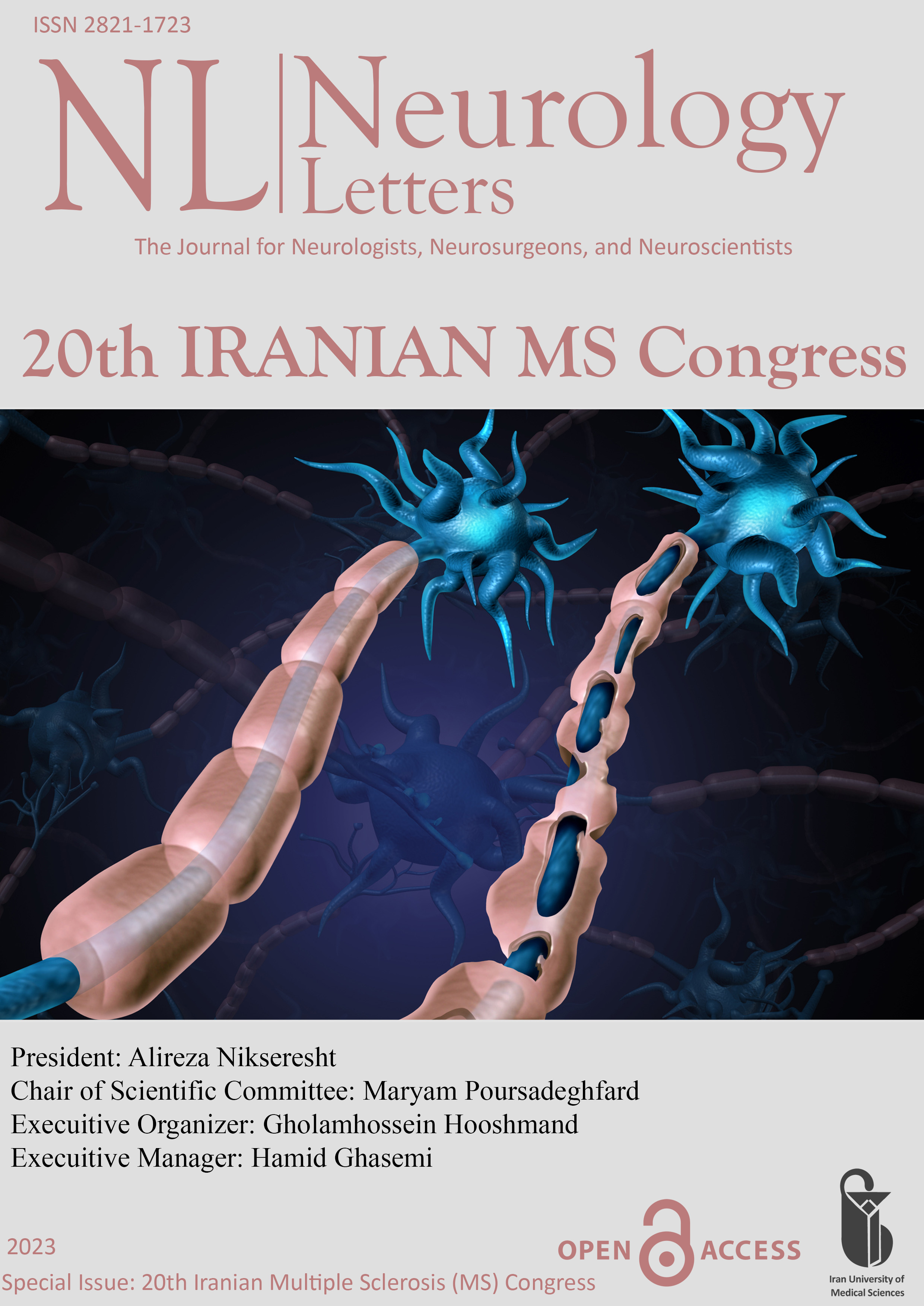Paroxysmal Events in Multiple Sclerosis (MS); Pseudoathetosis as a Presenting Symptom of MS (ORP-48)
Document Type : Oral Presentation
Author
Department of Neurology, Isfahan University of Medical Sciences, Isfahan, Iran
Abstract
Introduction: Movement disorders like tremor, myoclonus, paroxysmal hemi facial, paroxysmal dystonia, tonic spasms and pseudoathetosis can be caused by demyelinating lesions in spinal multiple sclerosis (MS), patient may present with acute proprioceptive sensory impairment and pseudoathetosis in limbs. Pseudoathetosis or piano playing movements of hands consisting of involuntary slow writing movements of fingers caused by a failure of joint position sense (proprioception) and indication disruption of the proprioceptive pathway form nerve to parietal cortex.
Pseudoathesois as presenting symptom of MS
A 38-year-old female present with acute proprioceptive sensory impairment and pseudo athetosis in the four limbs- particularly in the fingers of both hands, she had great difficulty in buttoning, unbuttoning, using chop sticks and writing. In neurologic exam she has profound loss of position and vibration sensation in all limbs, especially in both hands, pseudoathetoid movements was observed in the outstretched hands and extended fingers, and other neurologic exams were insignificant. In T2- weight MRI with GAD spinal cord reveal an active lesion in the posterior columns of cervical cord at the C3 vertebral level which was responsible for pseudoathetiod movements. Flair brain MRI shows multiple plaques in white matter periventricular and juxta cortical area.
Conclusion: Pseudoathetoid movements is a rare presentation of MS and is caused by loss of proprioception due to plaques in posterior column of spinal cord.
Keywords
 Neurology Letters
Neurology Letters
